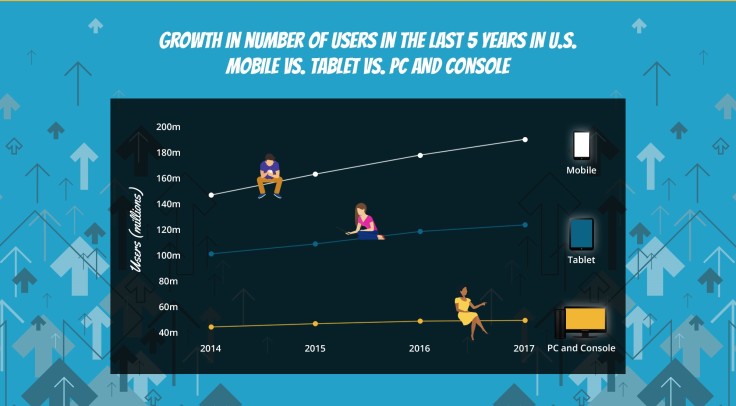Interactive story games are the modern-day equivalent of choose-your-own-adventure books, as they allow their users to insert a personality in the character they are playing as, and consequently form their own story through the decisions they make (Chan, 2018). Although interactive story games can be found on PC and consoles, there is a large market for interactive story games for a mobile platform. Mobile gaming, in particular, interactive story games are becoming increasingly popular. “Chat fiction apps hit their peak about a year ago, but they’re still going strong” (Blaker, 2018).
According to reports, the top seven interactive story games collectively (over the Apple store and Google Play) accumulated over “$14 million from in-app purchases” over the course of February in 2018.
Additionally, with websites that help construct and form a story into an interactive, playable game (such as Marvel app (n.d) / Story styles (n.d) / Textadventures (n.d) ) it allows for the production of quick games to be made and sold to a growing audience, an audience that is only on the rise. Mobile gaming is dominating the industry and was shown to surpass both console and PC revenue in 2017 (Chan, 2017).

(Raza, 2018)
As you can see, mobile gaming and tablet gaming is on the rise. whereas PC and Console gaming has stagnated. It is estimated that by 2021 the number of mobile gamers will be at a phenomenal level of 2.6 Billion users (Statista, n.d).
How does this relate to the game?
Well, the game I have designed needs to be produced for and catered towards a certain audience and platform. My game was inspired by choose-your-own-adventure books and narrative-driven games, and through the research above t is evident that such games are thriving on mobile app stores. With the availability of a keen audience (an audience which is expanding at a considerable and steady) and software which would make the production of such a game feasible within a term, I have concluded that my game should be primarily advertised to mobile audiences. In regards to the UI of the game, not much changes as the game is primarily made up of decisions which only require one click (or tap) of a button.
In summary, both mobile and tablet gaming users are increasing rising. Additionally, interactive narrative games are popular and on the rise. Therefore I believe my interactive narrative game should likewise be primarily designed for such an audience. However, since it is a text-based, story game, I believe presenting it on small phone screens would not be ideal. Although creating the game for mobile gamers makes sense due to their large numbers, I have to instead suggest the game is made for tablet users. Tablets are roughly the size of books anyway, and since the game has a lot of text to read (if they ignore or turn off narrations) it needs to be easily visible. Therefore, my game should be made for tablet users.
References:
Blacker, A. (2018). Interactive Story Games Are Trending. [online] Available at: http://blog.apptopia.com/interactive-story-games-tap-into-our-love-for-storytelling.
Chan, S. (2018). Apptopia: Interactive story games thrive on mobile with $14 million in revenues last month. [online] Available at: https://venturebeat.com/2018/03/05/apptopia-interactive-story-games-thrive-on-mobile-with-14-million-in-revenues-last-month/
Chan, S. (2017). Mobile game revenue finally surpasses PC and consoles. [online] Available at: https://venturebeat.com/2017/07/13/mobile-game-revenue-finally-surpasses-pc-and-consoles/
Raza, S. (2018). Statistics Show Mobile Gaming Continues To Rise Exponentially. [online] Available at: https://www.valuewalk.com/2018/02/mobile-gaming-rapid-growth/
Statista. (2019). Number of global mobile gamers 2021. [online] Available at: https://www.statista.com/statistics/748089/number-mobile-gamers-world-platform/